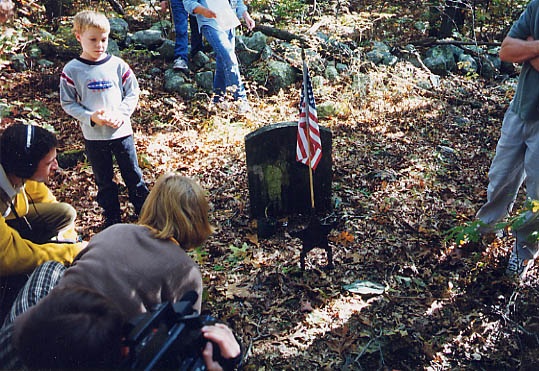

It's the Best that's Left
The 30-acre remnant of the original Rhode Island homestead is a rich archaeological site representing Tefft occupations between the 17th century to the early 20th century. There is a nearly continuous record of artifacts still buried in the ground waiting to tell their story. The site has been recognized by the State of Rhode Island as eligible for the National Register of Historic Places. It is considered to be one of the best colonial sites in Rhode Island and possibly New England.
It Represents a Rare Opportunity
Few families can actually see their ancestral home. Over the years many of the original dwelling places have been obliterated by development. They have been bulldozed away for a variety of reasons. Laws protecting archaeological sites are relatively new. Archaeological sites have not had any real legal protection before 1970. Many an ancient home and family cemetery has been turned into a pile of disturbed rubble. Archaeological sites are non-renewable resources. Once disturbed or destroyed, they can not be reconstructed or replaced.
The Story is Only Partially Known
Many people think that the written records are all we have need for; that the east coast has been wonderfully documented since colonial times. This is true to a degree, but written records just tell a part of the story. They contain only what people though worthy to record. Actually, there are many gaps in our knowledge of day to day life in colonial times. There is much that was never recorded and can only be discovered by looking at the artifacts and features people left behind. Trash pits are treasures when it comes to real discovery of those sides of colonial history not recorded in letters, books or journals. Also, the archaeological record can be used to substantiate or claify the written record. The Tefft heritage is only partially known. The story can be much, much fuller if the archaeological record is preserved for future study. And, in a very real sense, the Tefft Homestead represents all of our colonial heritage.
Untold Stories are Written in the Soil
The site is one of the few remaining capable of revealing new information about early cross-cultural contact--a vital time in the history and development of our nation. The Tefft home site not only has colonial era remains, but has the remains of thousands of years of Indian prehistory. Prehistoric sites abound on this land with no written history for these Americans. Their story, and the story of the colonial people they interacted with, is written in the soil.
Respect is Owed our Colonial Pioneers
The Tefft Homestead contains several cemeteries. These early cemeteries contain Tefft ancestors and people in the lines intermarrying with them (Crandalls, Gardeners, Tennants, Lillybridges, Hoxies, Greenes, and others). The care and maintenance of these cemeteries is important out of basic respect, and let these pioneers not be neglected or forgotten.
Saving the Homestead Opens the Door to Wonderful Possiblity
The land encompasses a beautiful semi-rural New England setting, still unspoiled by strip malls and massive development. It is situated on the western flanks of Tefft Hill near the Great Swamp, scene of a major, decisive battle in King Philips War. The land not only represents a wonderful area of green space, but could be the site of interpretive trails and other educational improvements. It could be a key site in encouraging cultural tourism and is one of South Kingstown's true cultural and natural assets.


